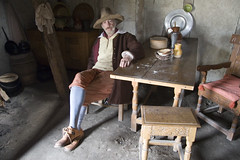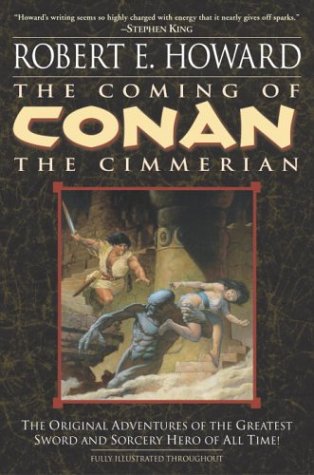Literary Criticism: Richard Matheson's "I Am Legend"
5 Questions About: Charles Bukowski
Essay: Banning Harry
Old Van Halen
Farewell, Lord Mailer
Poem: Walking to Work, 5:42 a.m.
5 Questions About: My Elves Are Different
Movie Review: Grindhouse - Two is Better Than One
Mystical, Melancholy Autumn
Literary Criticism
Fantastically Bad Cinema
Essays
Under God's Right Arm
June 2006
July 2006
August 2006
September 2006
October 2006
November 2006
December 2006
January 2007
February 2007
March 2007
April 2007
May 2007
June 2007
July 2007
August 2007
September 2007
October 2007
November 2007
December 2007
January 2008
February 2008
March 2008
April 2008
May 2008
June 2008
July 2008
August 2008
September 2008
October 2008
November 2008
December 2008
January 2009
February 2009
March 2009
Alcoholic Poet
Baby Got Books
Beaman's World
BiblioAddict
Biblio Brat
Bill Crider's Pop Cultural Magazine
The Bleeding Tree
Blog Cabins: Movie Reviews
A Book Blogger's Diary
BookClover
Bookgasm
Bookgirl's Nightstand
Books I Done Read
Book Stack
The Book Trib
Cold Hard Football Facts
Creator of Circumstance
D-Movie Critic
The Dark Phantom Review
The Dark Sublime
Darque Reviews
Dave's Movie Reviews
Dane of War
David H. Schleicher
Devourer of Books
A Dribble of Ink
The Drunken Severed Head
Editorial Ass
Emerging Emma
Enter the Octopus
Fatally Yours
Flickhead
The Genre Files
The Gravel Pit
Gravetapping
Hello! Yoshi
HighTalk
Highway 62
The Horrors Of It All
In No Particular Order
It's A Blog Eat Blog World
Killer Kittens From Beyond the Grave
The Lair of the Evil DM
Loose Leafs From a Commonplace
Lost in the Frame
Little Black Duck
Madam Miaow Says
McSweeney's
Metaxucafe
Mike Snider on Poetry
The Millions
Moon in the Gutter
New Movie Cynics Reviews
Naked Without Books
A Newbie's Guide to Publishing
New & Improved Ed Gorman
9 to 5 Poet
No Smoking in the Skull Cave
Orpheus Sings the Guitar Electric
Polly Frost's Blog
Pop Sensation
Raincoaster
R.A. Salvatore
Reading is My Superpower
Richard Gibson
SciFi Chick
She Is Too Fond Of Books
The Short Review
Small Crimes
So Many Books
The Soulless Machine Review
Sunset Gun
That Shakesperherian Rag
Thorne's World
The Toasted Scrimitar
This Distracted Globe
Tomb It May Concern
2 Blowhards
Under God's Right Arm
A Variety of Words
The Vault of Horrr
Ward 6
When the Dead Walk the Earth
The World in the Satin Bag
Zoe's Fantasy
Zombo's Closet of Horror
Bookaholic Blogring
Power By Ringsurf
An Interview With Carolyn Freeman, Research Manager at Plimoth Plantation
(DaRK PaRTY still has turkey leftovers in the refrigerator and we’re still trying to lose the 10 pounds we gained gorging ourselves at Thanksgiving. What better way to celebrate the Thanksgiving season than to talk with Carolyn Freeman Travers, the research manager at Plimoth Plantation? Carolyn grew up in 
DaRK PaRTY: After fleeing religious persecution in
Carolyn: In 1607 and 1608, Separatists from the Scrooby area of Nottinghamshire fled
After living there for 11 or 12 years, the English Separatists began to look for a new place to live. They had a number of reasons; chief of which was the nearing end of the Twelve Years' Truce between the Dutch and the Spanish, set to occur in 1621.
William Bradford in his history of Plymouth Colony gave several other reasons. The poverty most of them lived in was discouraging other English from joining them, and the hard work was making them old before their time. Their children were either bowed down with the work they were doing or assimilating into the Dutch culture. They also wanted to bring Christianity to the remote parts of the world. All of these factors combined to cause some, although less than half, of the Separatists in
DP: When the Pilgrims arrived in
Carolyn: The Mayflower Compact, or combination as the colonists called it, was an interim agreement to stick together and obey the laws of
By landing in
After the Mayflower returned to
DP: During their first  cause of the hardship?
cause of the hardship?
Carolyn: The two primary sources which describe conditions the first winter after their arrival both blamed the long voyage, wet and cold conditions, and lack of housing for the sicknesses which ultimately resulted in the deaths of almost half of the colonists.
The monotonous shipboard diet with its lack of fruit and vegetables resulted in scurvy or near scurvy for the colonists, and there was little by way of fresh food available after landing. That, coupled with the wet and cold conditions they faced those first few months, resulted in a "general sickness," very likely pneumonia or something similar, which took the lives of almost 50 of the 102 colonists.
Bradford in his history gave this description: "But that which was so sad and lamentable was, that in two or three months half of their company dyed, especially in January and February, being the depth of winter and wanting houses and other comforts; being infected with the scurvy and other diseases, which this long voyage and the (terrible) condition had brought upon them; so as there died sometimes two or three of a day in the aforesaid time; that of 100 and odd persons, scarce 50 remained." (Editor’s note: translated from old English).
“Mourt's Relation” referred to the distance that the passengers had to wade - three-quarters of a mile to get to shore while the Mayflower was at Provincetown, resulting in coughs and colds: "oftentimes they waded to the middle of the thigh, and often to the knees to go and come from land... it brought to the most, if not to all, coughs and colds, the weather proving suddenly cold and stormy, which afterwards turned to the scurvy, whereof many died."
DP: Miles Standish is often romanticized in his role as military leader of the Pilgrims. However, by some accounts he could be a mercurial and vicious man. What is your impression of Captain Standish?
Carolyn: I would call Myles Standish martial rather than mercurial. He had been trained as a soldier in the 
Governor Bradford in his description of the first winter singled out Standish as one of the few healthy persons who "to their great commendations be it spoken, spared no pains, night nor day, but with abundance of toil and hazard of their own health, fetched them wood, made them fires, dried them meat, made their beds, washed their loathsome clothes, clothed and unclothed them; in a word, did all the homely and necessary offices for them which dainty and queasy stomachs cannot endure to hear named; and all this willingly and cheerfully, without any grudging in the least, showing herein their true love unto their friends and brethren." (Editor’s note: translated from old English).
The story can be read in colonist Edward Winslow's “Good News from
DP: What was the first Thanksgiving really like and what is the average person's biggest misconception about it?
Carolyn: The event popularly known as the "First Thanksgiving" was in reality a traditional English harvest festival, lasting several days, involving people outside of the church, and including feasting and sports. A Day of Thanksgiving in the Separatist faith was essentially another Sabbath, spent primarily in church and as likely to be a fast as a feast.
The only description of the event comes from a letter. Colonist Edward Winslow wrote to a friend in
I don't think I could pick out the biggest misconception. It wasn't a first - there had been thanksgiving services held by other Europeans prior to 1620 and Native peoples had been giving thanks in special ceremonies for thousands of years prior to their arrival. As I said above, it wasn't a day of Thanksgiving by their definition, although Winslow's description depicted an event much like what the American holiday became. It is also surprising to people how little is known - not the date, only some of the participants, very little of the menu and none of the logistics.
Read our 5 Questions About interview on the Great War here
Read our 5 Questions About interview about happiness here
Labels: 5 Questions, Carolyn Freeman, History, interview, Pilgrims
 StumbleUpon |
StumbleUpon |
 del.icio.us |
del.icio.us |
 Technorati |
Technorati |

This work is licensed under a Creative Commons Attribution-No Derivative Works 3.0 License.
The Template is generated via PsycHo and is Licensed.





